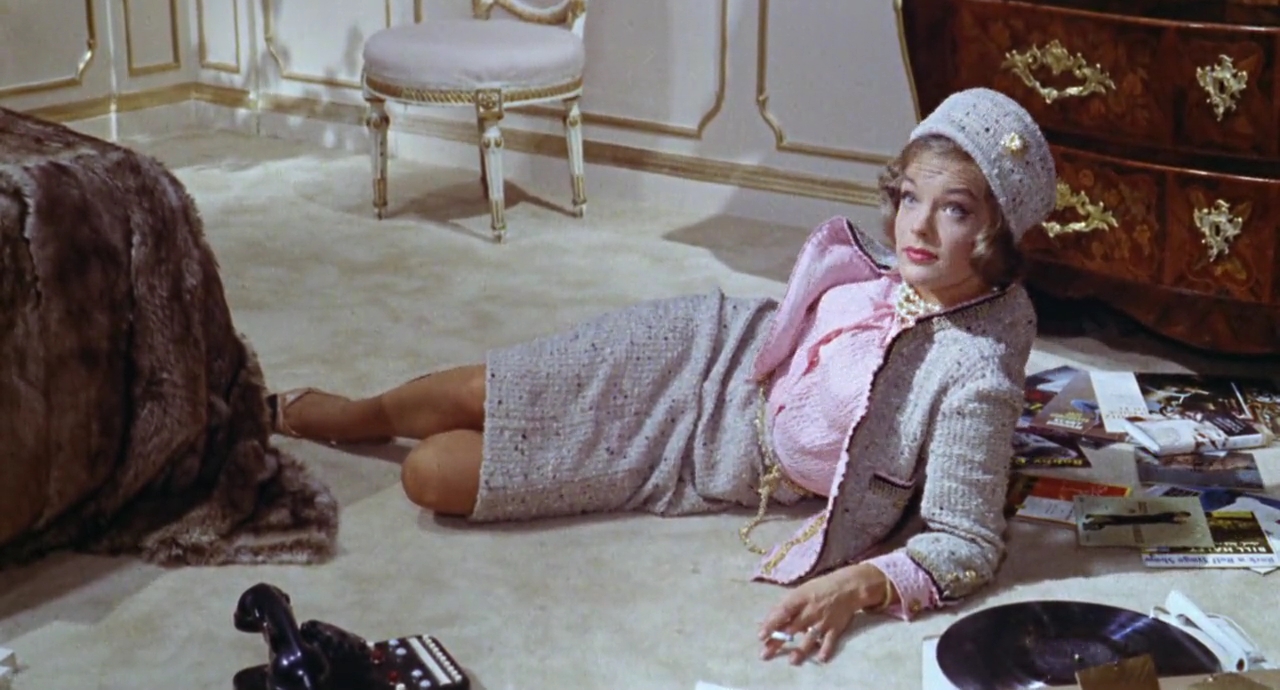“A woman is not all the time the same. Sometimes we’re very cooperating. But sometimes we are very difficult. But being difficult is possibly being cooperating, no? So let’s have a pact, just you and Catherine Deneuve: don’t ever change anything, there are no words for this mystery. We know what it is–Chanel.” So commences Sofia Coppola’s homage to the iconic French fashion house in time for its Mademoiselle Privé exhibition debut in Tokyo. Running from October 19 through December 1, the show’s aim to give immersive insight into the long-standing innovation of the fashion house begins with Coppola’s, for all intents and purposes, clip show set to Grimes’ “Oblivion.” As a song that came out in 2012 (from her seminal Visions album), it bears noting that this was probably the year everything ended and we all chose to ignore it. Including any “vision” on the part of most reputable brands that once sought to push the envelope before merely trying to stay firmly inside of it so as not to disrupt already fledgling sales margins (for don’t nobody wanna pay for shit these days).
So it is that Coppola chooses to focus primarily on the past hagiography of Coco Chanel, the woman who made femininity not only comfortable and timeless, but also wearable for the masses (or at least the masses willing to charge it). Marilyn Monroe, featured several times throughout the montage, was undeniably instrumental in making the brand accessible to Americans, particularly those of the Midwest and Southern variety, who needed the McDonald’s of movie stars to advertise it to them. Of course, there are flashes of the present, such as scenes of the brand’s most unto himself iconic creative director, Karl Lagerfeld (RIP), walking down the runway with Lily-Rose Depp. But, by and large, Coppola remains committed to the glamor of the demi-monde that could only seem to exist in the past, when a concern with elegance and poise was a reflection of a culture that still had faith in the world. There’s an obvious reason, after all, we’ve allowed a general frumpiness (which semi-rhymes with another noun indicative of the era) to triumph in the twenty-first century: we don’t believe in the benefit of the veneer anymore. For polish would entail we actually believed there was something or someone out there worth being the best version of ourselves for. Your Elizabeth Taylors and your Jackie Os (who made the classic Chanel suit a must-have when she first appeared in her pink one complete with pillbox hat).
Called Mademoiselle Privé because “these two words [were] on the sign of the door to Mademoiselle Chanel’s Creation Studio on the third floor of 31 rue Cambon in Paris,” there is something about the nature of the exhibition that is at once reverent and incredibly sad. After all, Coco Chanel was a woman who once walked out on Hollywood (where she originally agreed to dress stars like Marlene Dietrich and Gloria Swanson after Samuel Goldwyn made her a financial offer she couldn’t refuse) because it was “the capital of bad taste and vulgarity.” Alas, there seems to be nowhere in the world at this juncture that does not embody that condemnation. Not even among the Italian aristocracy, where Coppola turns to a scene of Romy Schneider in Luchino Visconti’s segment of Boccaccio ‘70, entitled “Il Lavoro,” to showcase, once more, the Chanel three-piece suit.
Noticeably missing from the series of clips seems to be the little black dress, which Givenchy might have usurped in terms of making it their own when Audrey Hepburn came along eating a Danish in one. Perhaps that’s why such favor is given to Monroe instead, who concludes the variety of clips before an illustrated Coco walks before a series of mirrors and we’re then given a closed door to Mademoiselle Privé. For the door really is closed to all of us now in terms of ever recapturing that long gone sense of glittering glamor.






















